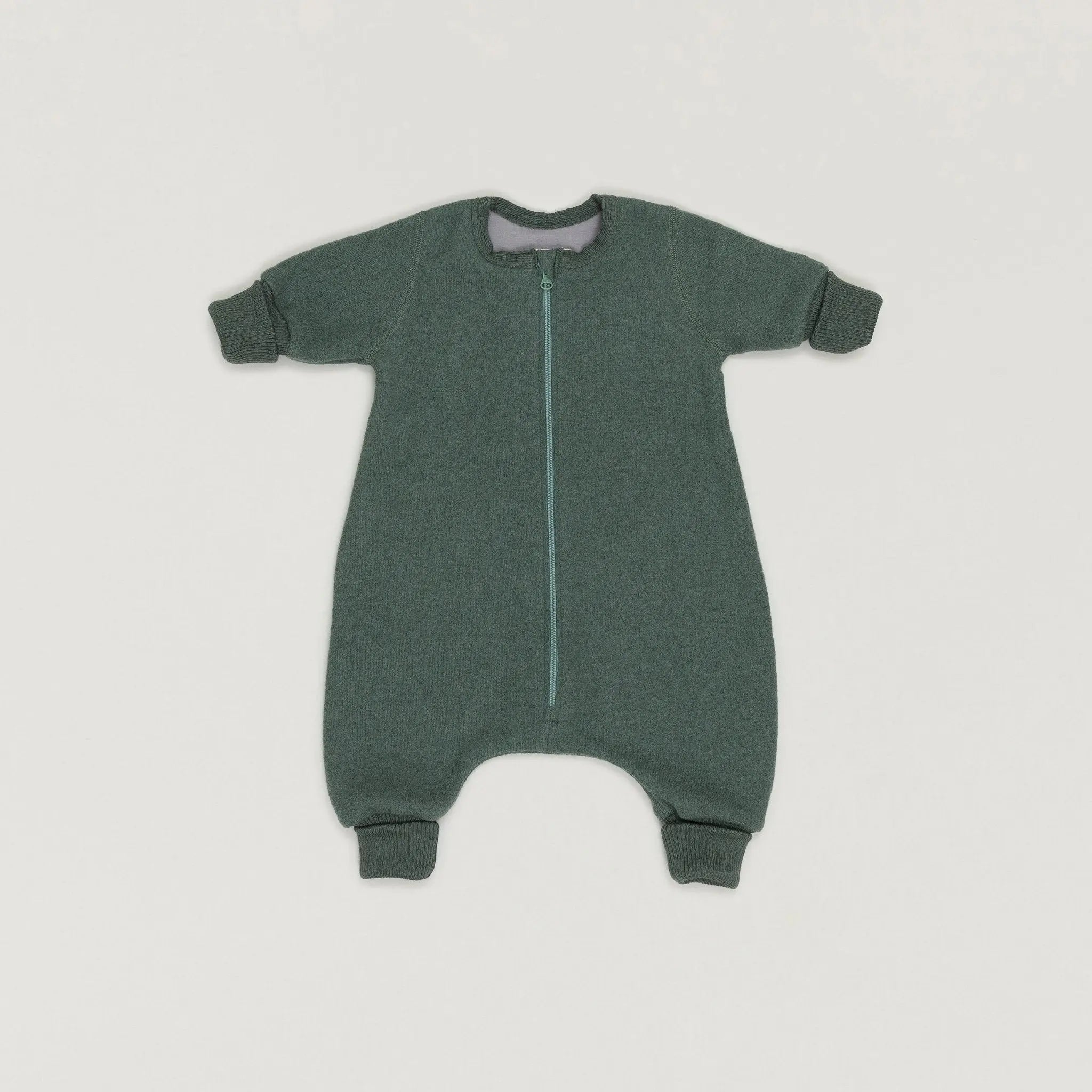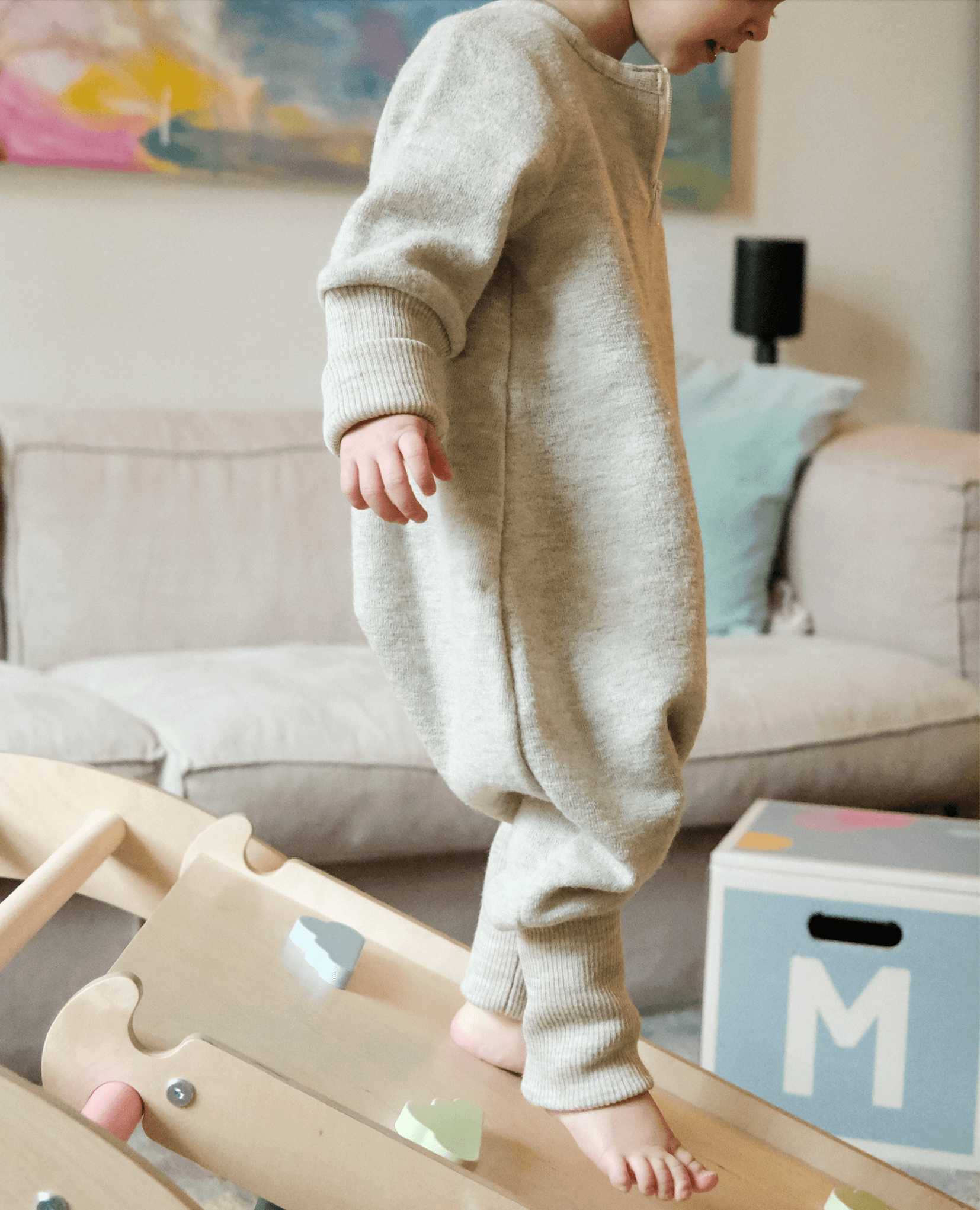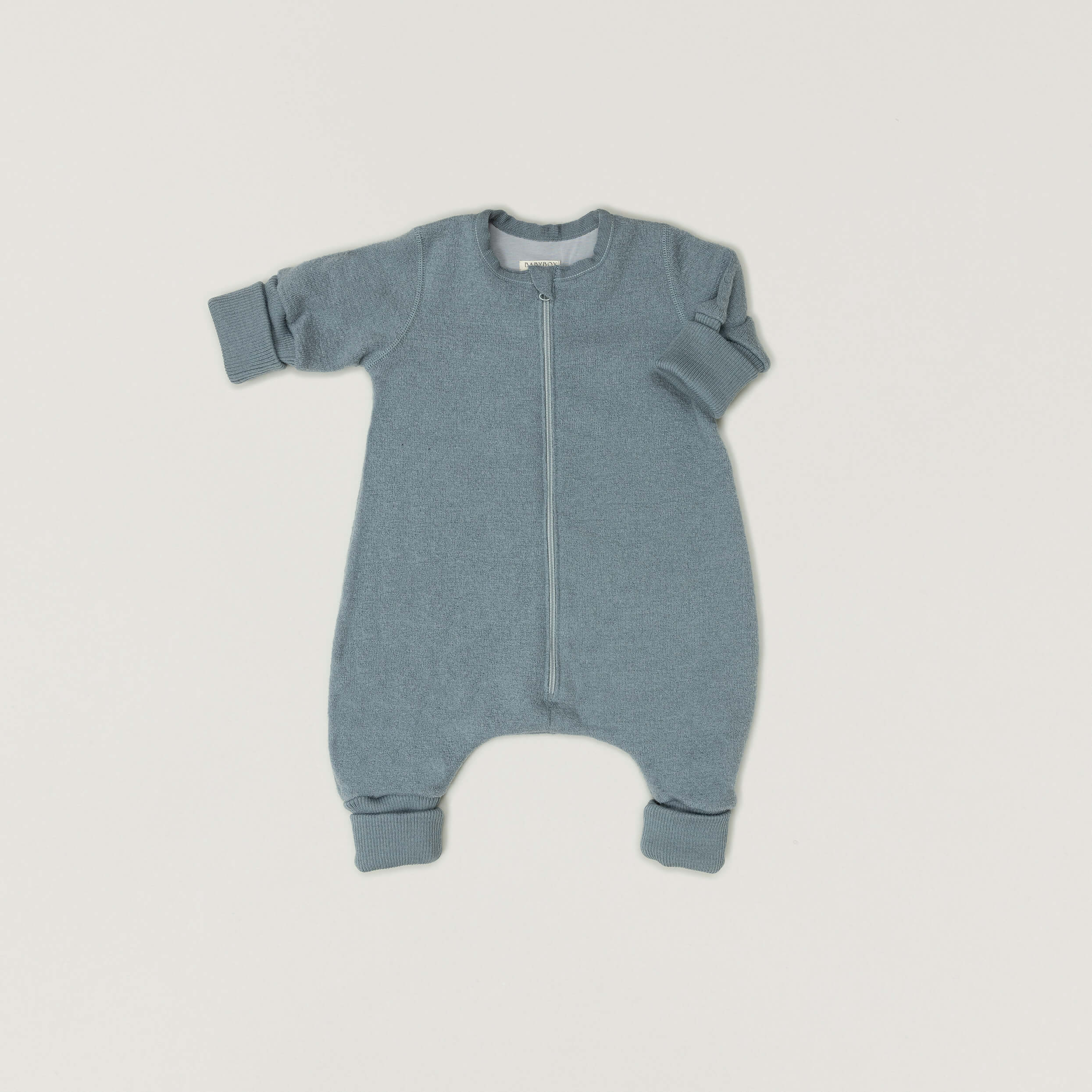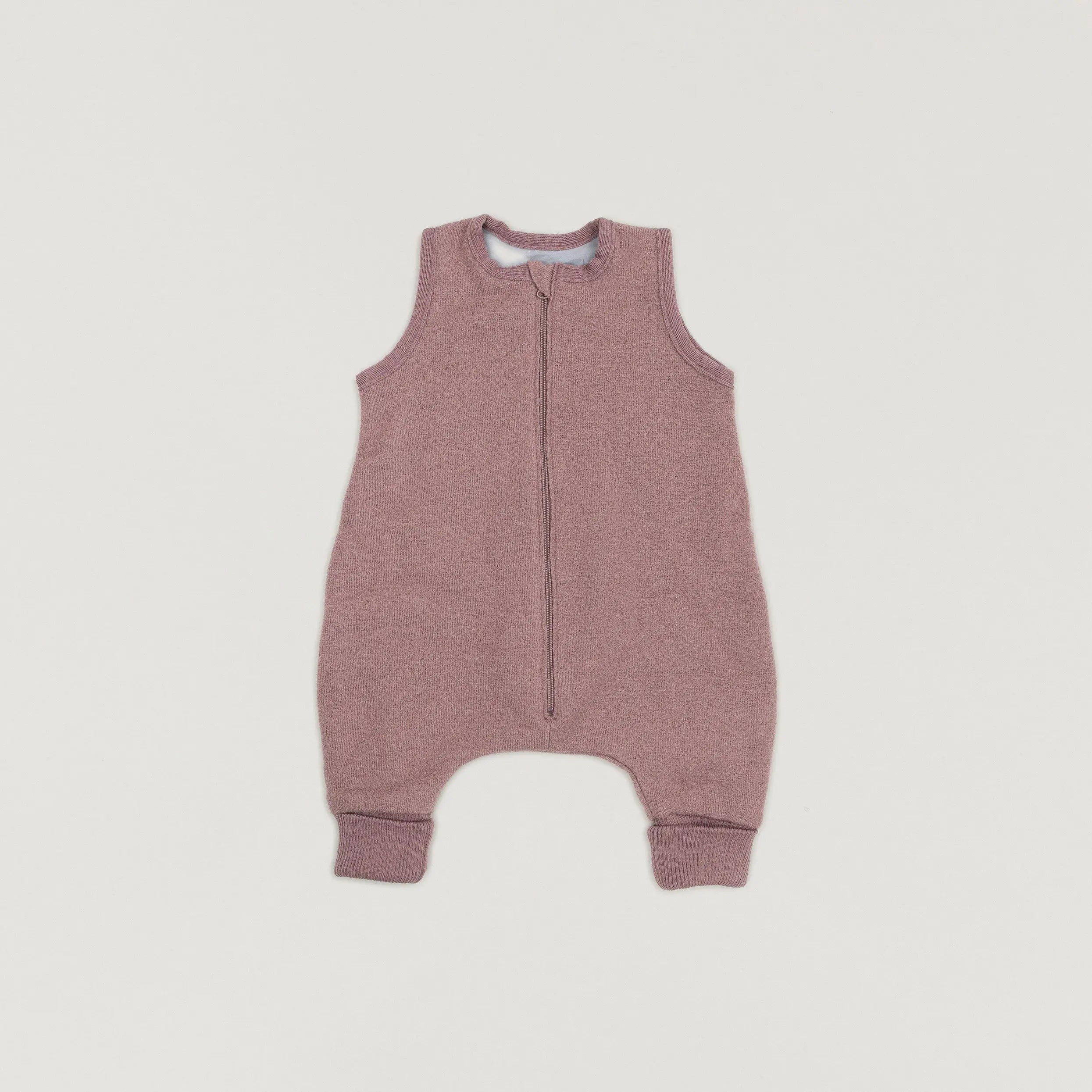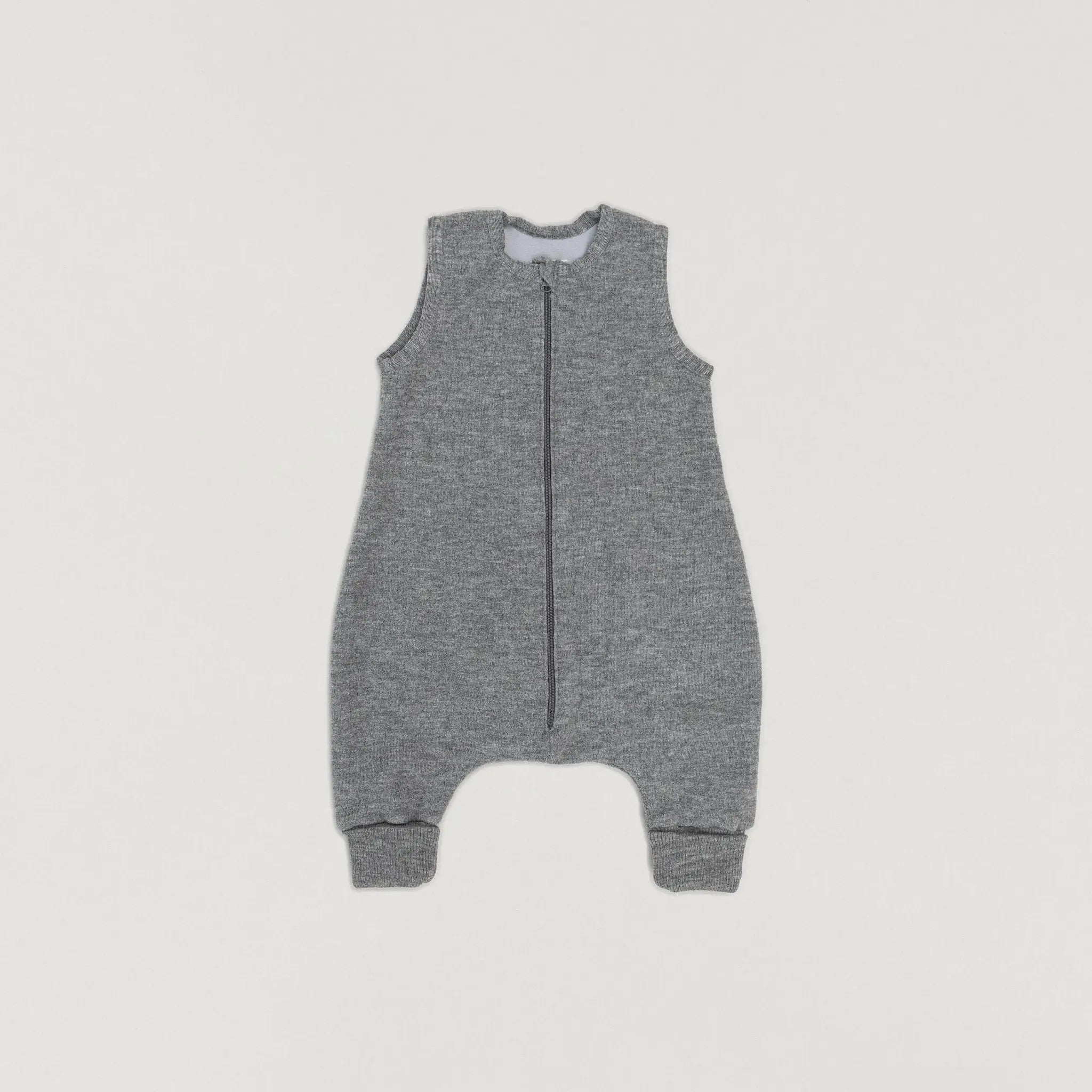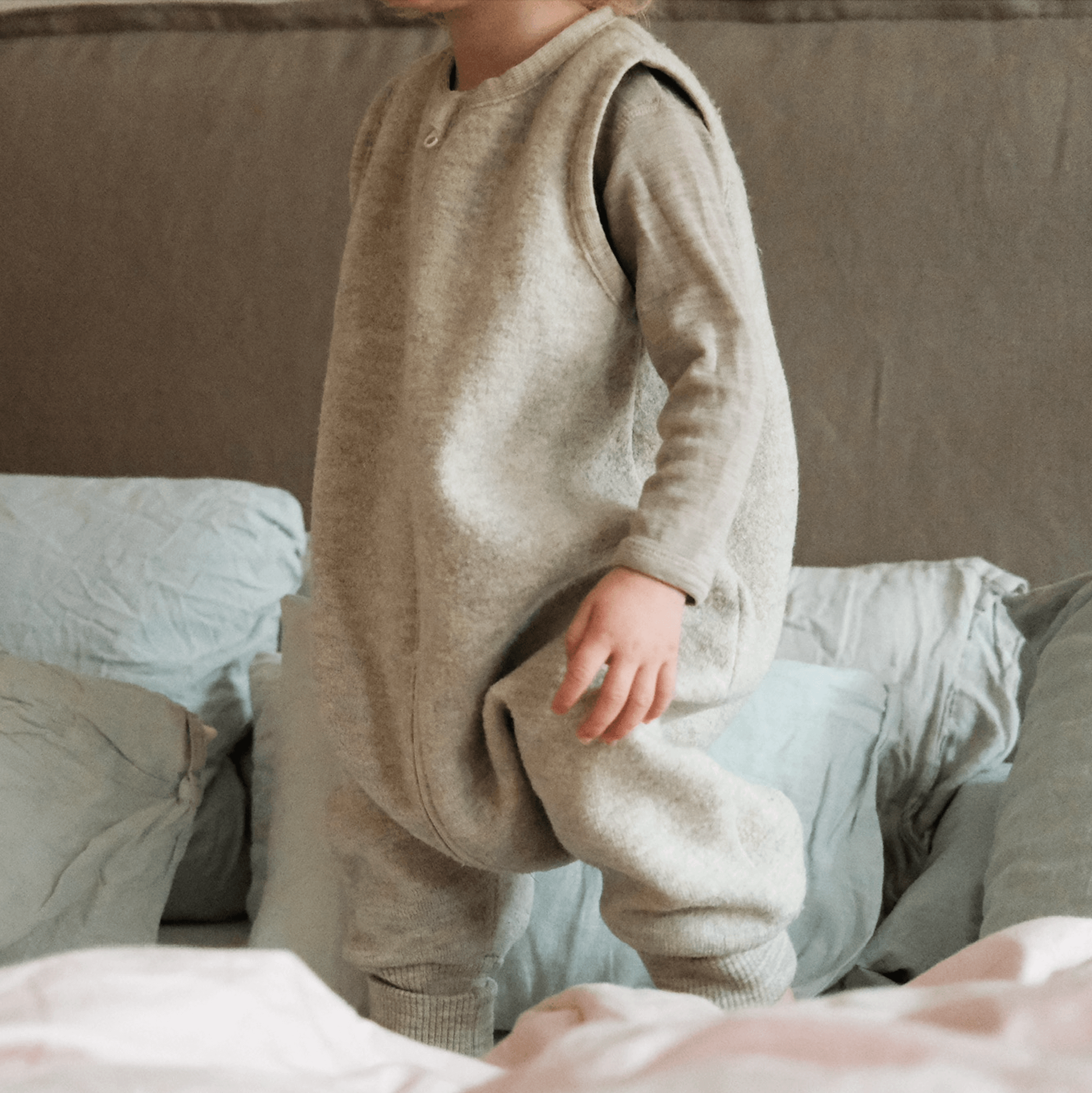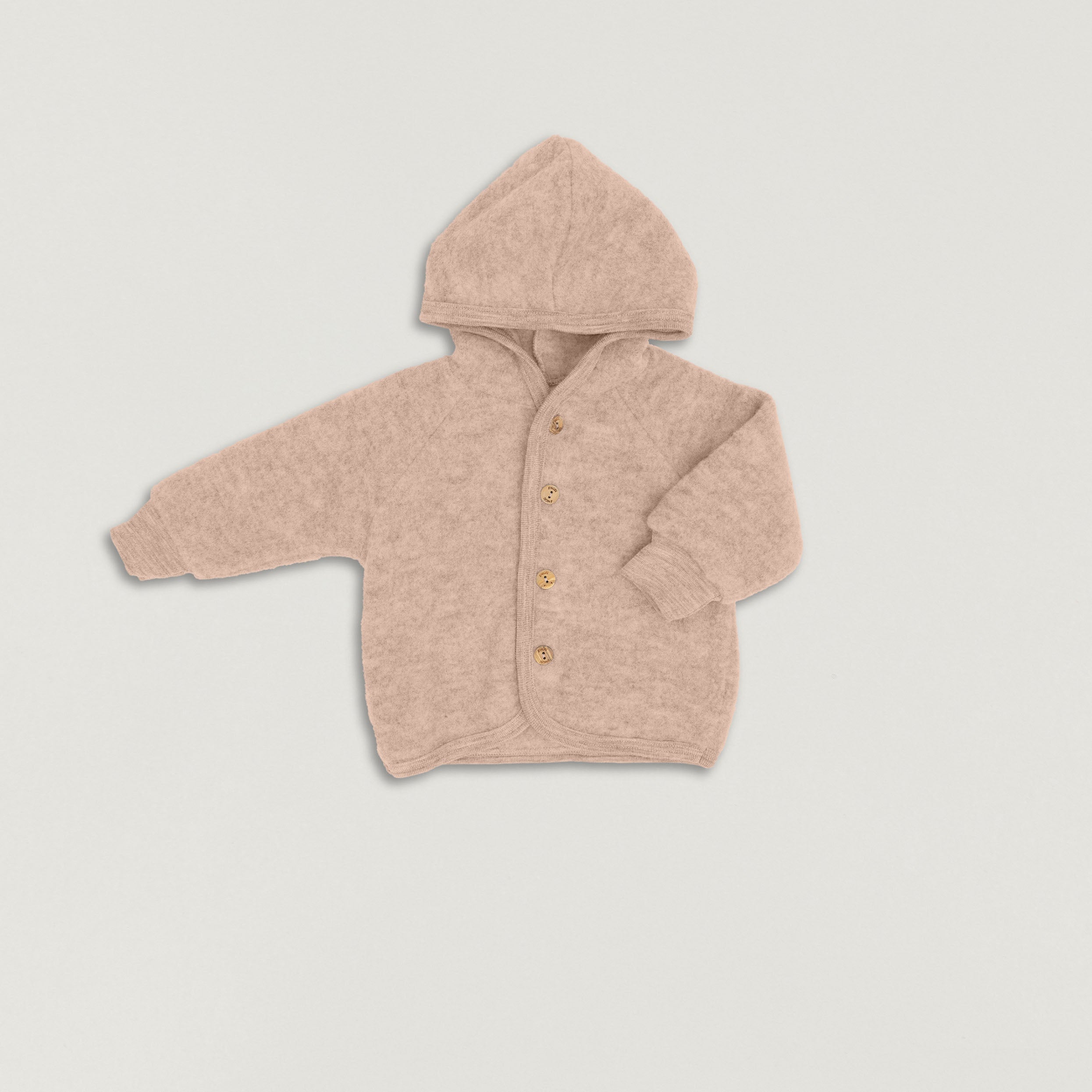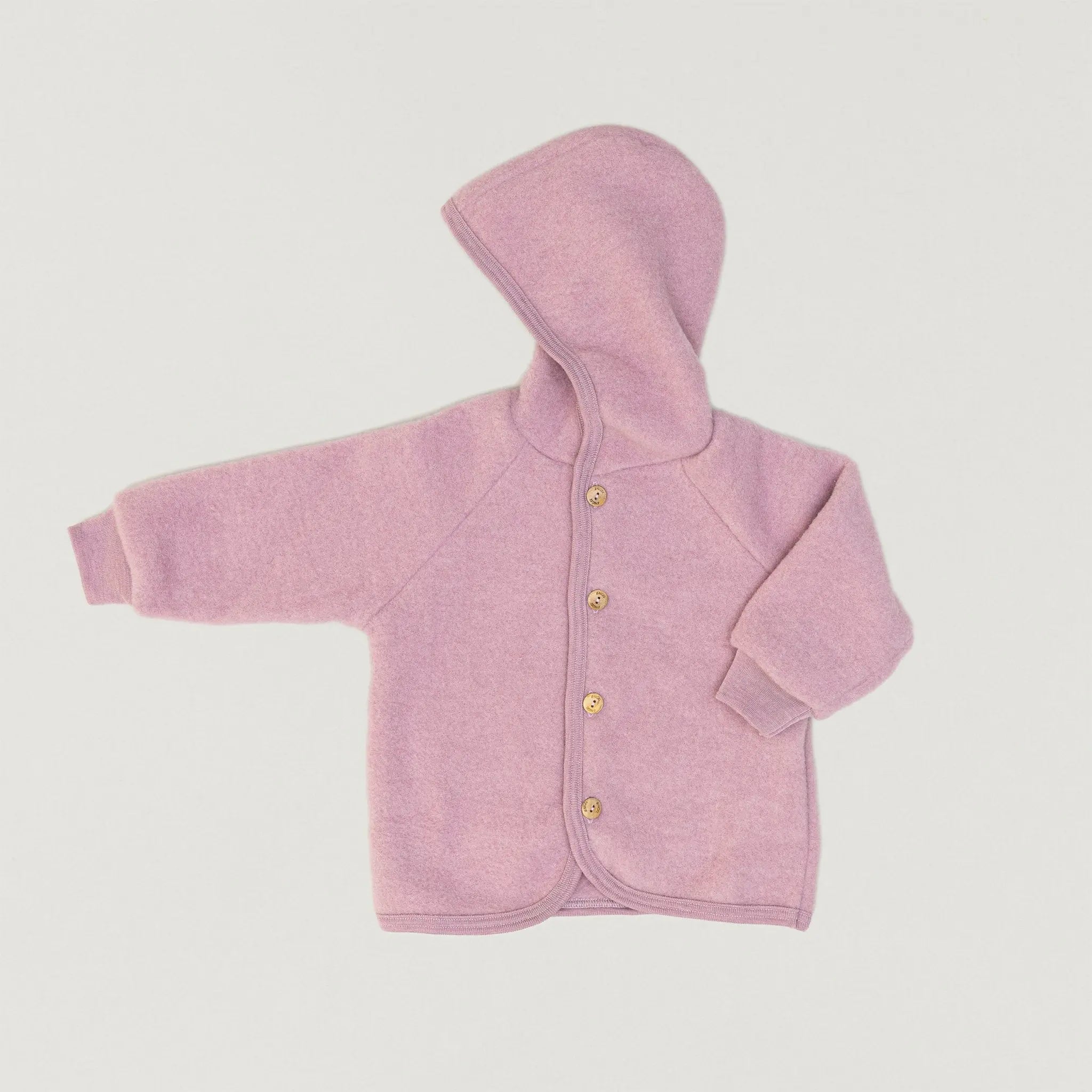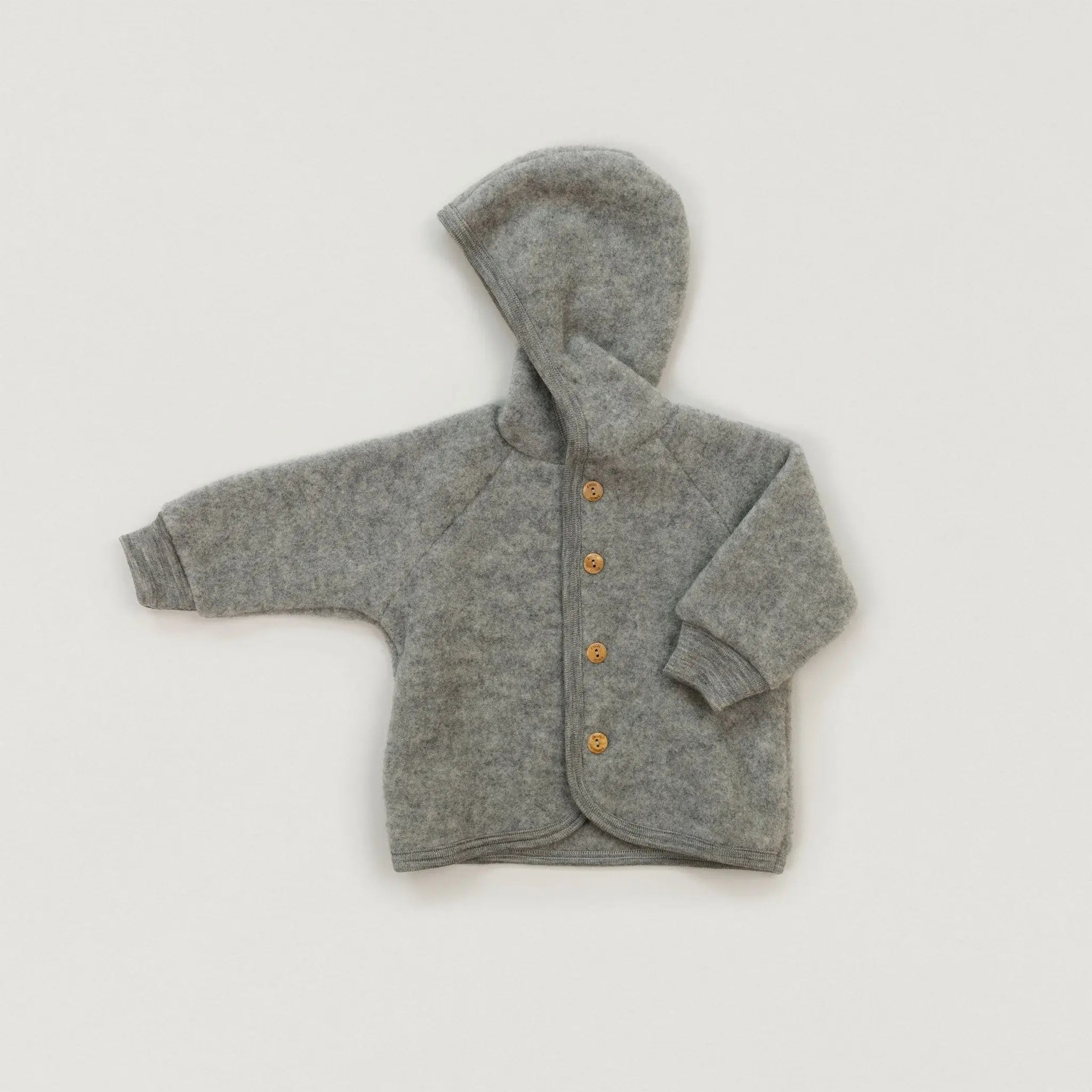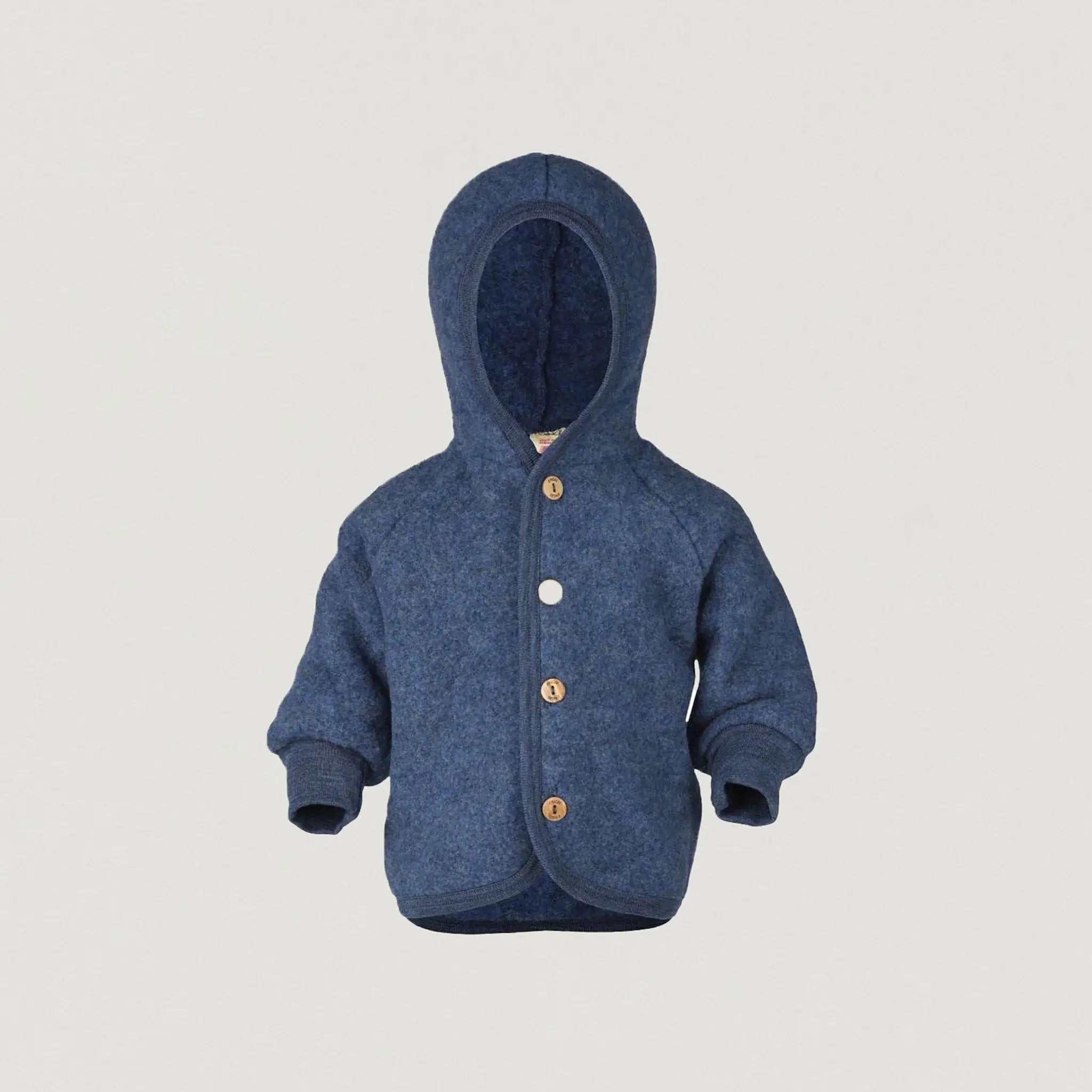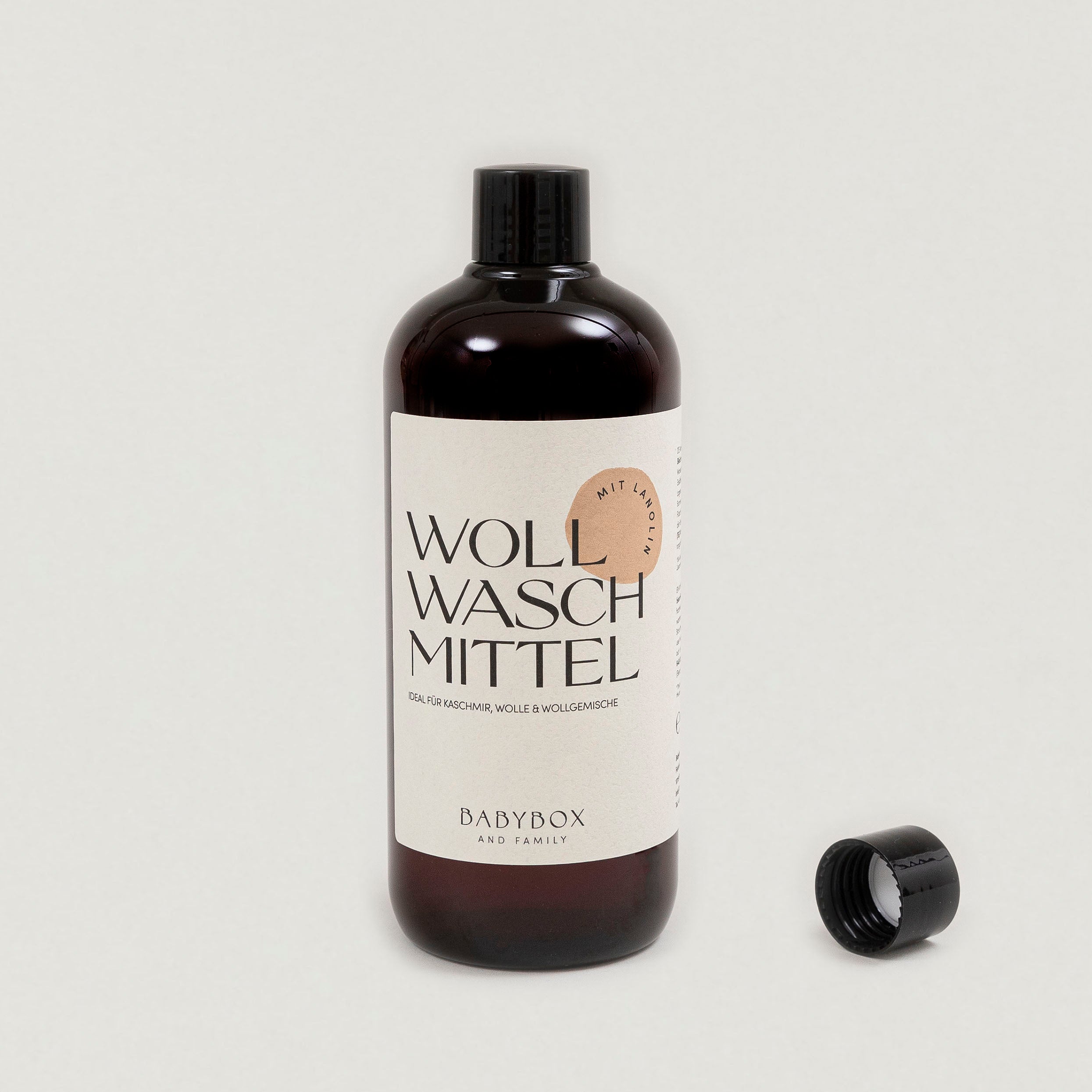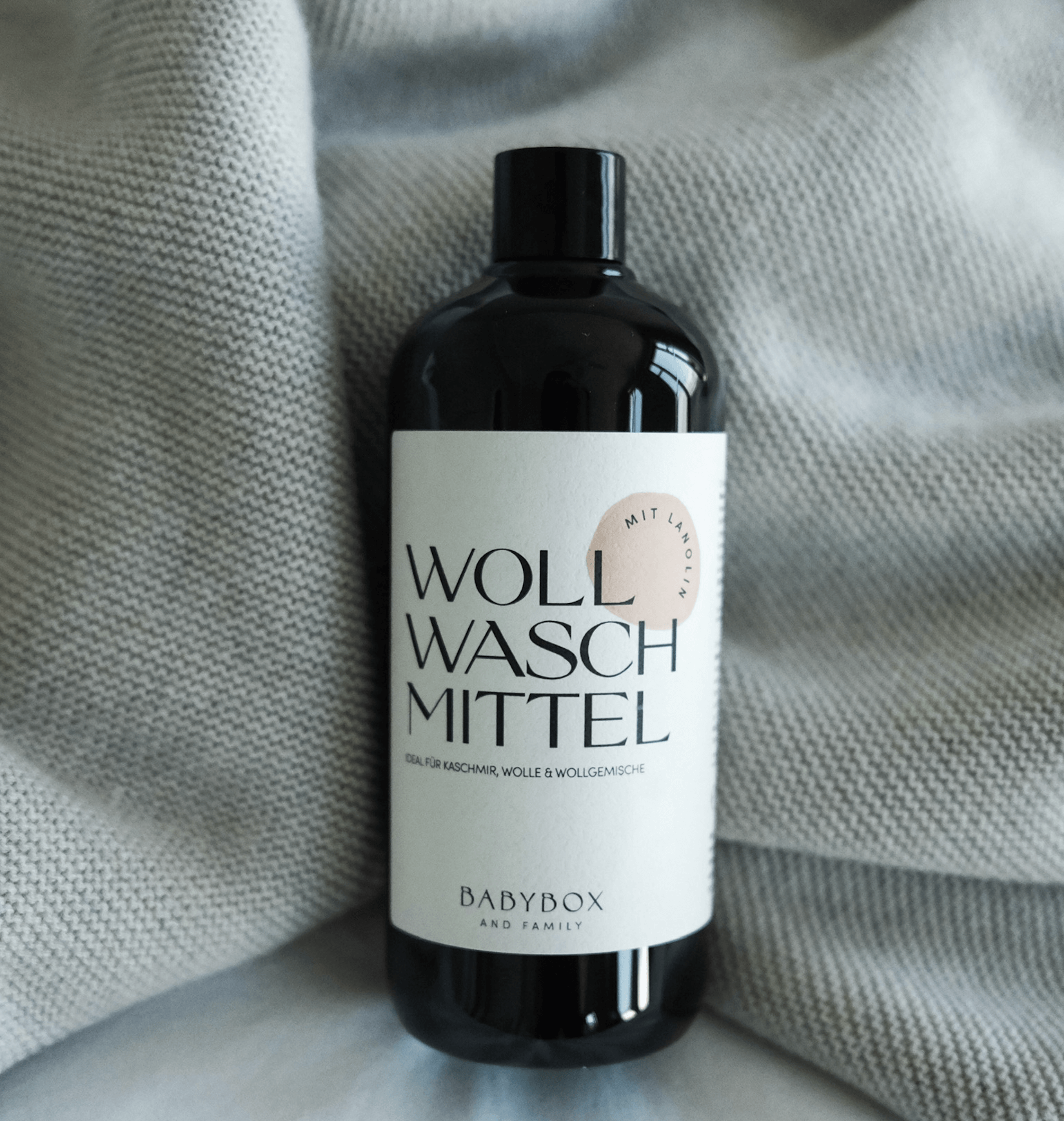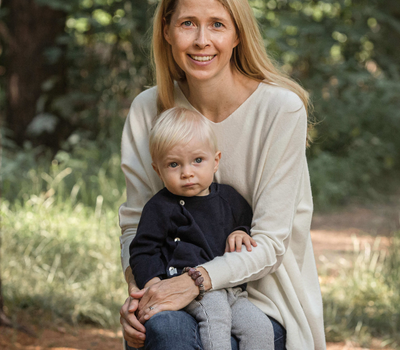The most important thing first
Boiled wool is denser, more durable, and windproof, making it better suited for very cold temperatures down to -15°C. It provides good insulation, is water-resistant, and protects against wind, but is less flexible. Wool fleece, on the other hand, is softer, more flexible, and offers greater freedom of movement, making it more suitable for milder temperatures, around -5°C. It is less wind- and water-resistant and works well as an underlayer beneath windproof or rain clothing. Both materials are ideal for layering, especially with wool or wool-silk undergarments.
A question we frequently receive as the colder season approaches is: What is better for my child, boiled wool or wool fleece? Before we answer that, it's important to understand the differences.
What is boiled wool, and what are its advantages?
Boiled wool (also known as felted wool) is a high-quality textile made from pure virgin wool through a special processing method. During the fulling process, knitted or woven wool is compacted with heat, moisture, and movement, causing the fibers to felt and contract. The result is a thick, dense, and durable fabric.
Properties of boiled wool:
- Thermal insulation: The compact structure retains heat very well.
- Breathable: Despite being thick, the fabric remains breathable and ensures a comfortable body climate.
- Water- and dirt-repellent: Thanks to the felted structure, water beads off, and dirt sticks less.
- Robust and durable: Boiled wool is sturdy and maintains its shape and function even after extended use.
- Natural elasticity: The fabric remains flexible due to the properties of wool and adapts well.
Boiled wool is often used for weather-resistant clothing such as jackets, coats, or outdoor wear, as it provides warmth without restricting movement and is ideal for changing weather conditions.
What is wool fleece, and what are its advantages?
Wool fleece is a soft, fluffy fabric made from pure wool or a blend of wool and other fibers (e.g., cotton or synthetic materials). The main difference between wool fleece and other wool fabrics like boiled wool lies in the production and resulting properties.
Properties of wool fleece:
- Soft and fluffy: Unlike boiled wool, which is dense and firm, wool fleece is made with a particularly soft, slightly brushed surface, making it feel very pleasant and cozy on the skin.
- Thermal insulation: Like boiled wool, wool fleece insulates well and keeps you warm while being lightweight and flexible.
- Breathable: Wool naturally has breathable properties, meaning wool fleece regulates warmth well and wicks away moisture, making it comfortable to wear in fluctuating temperatures.
- Elastic and lightweight: Wool fleece is less structured than boiled wool but very lightweight and flexible, making it ideal for comfortable garments such as sweaters, jackets, hats, and scarves.
- Moisture- and odor-resistant: Like other wool fabrics, wool fleece is naturally moisture-repellent and resists odors, making it ideal for outdoor use.
Usage: Wool fleece is mainly used for warm, cozy clothing like jackets, sweaters, blankets, or baby clothing. Its soft texture and high comfort make it popular for garments worn directly on the skin.
When do we recommend boiled wool, and when do we recommend wool fleece for babies and toddlers?
Boiled wool primarily for toddlers aged 9 months and older
We recommend boiled wool more for children aged 9-12 months because the fabric is generally bulkier and firmer, making movement in a boiled wool suit more challenging for very young children. Additionally, the properties of boiled wool, especially in overalls or jackets, are better suited for children who are already mobile. A wool fleece overall for mobile children would be impractical because:
- It absorbs water more quickly when children sit in snow or wet conditions.
- It lets wind through more easily than boiled wool, meaning it doesn't insulate as well overall.
- It collects more dirt than boiled wool.
Moreover, the density and wind resistance of boiled wool make it especially suitable for lower temperatures (down to -15°C), making it overall warmer than wool fleece. Therefore, for mobile children aged 9 months and older who don't have additional protection from a stroller or body heat, boiled wool is our first choice, especially for overalls.
Wool fleece primarily for babies aged 0-9 months
In our opinion, wool fleece is the better alternative for babies aged 0 to 9 months. At this age, babies are primarily carried, meaning they are kept warm by your body heat and are wind-protected by the carrier and your jacket, or they are lying in the stroller, protected by a lambskin sack and the stroller itself. Therefore, the less windproof boiled wool is not necessarily required. With wool fleece, your child has more freedom of movement, and overall, handling your delicate baby is easier.
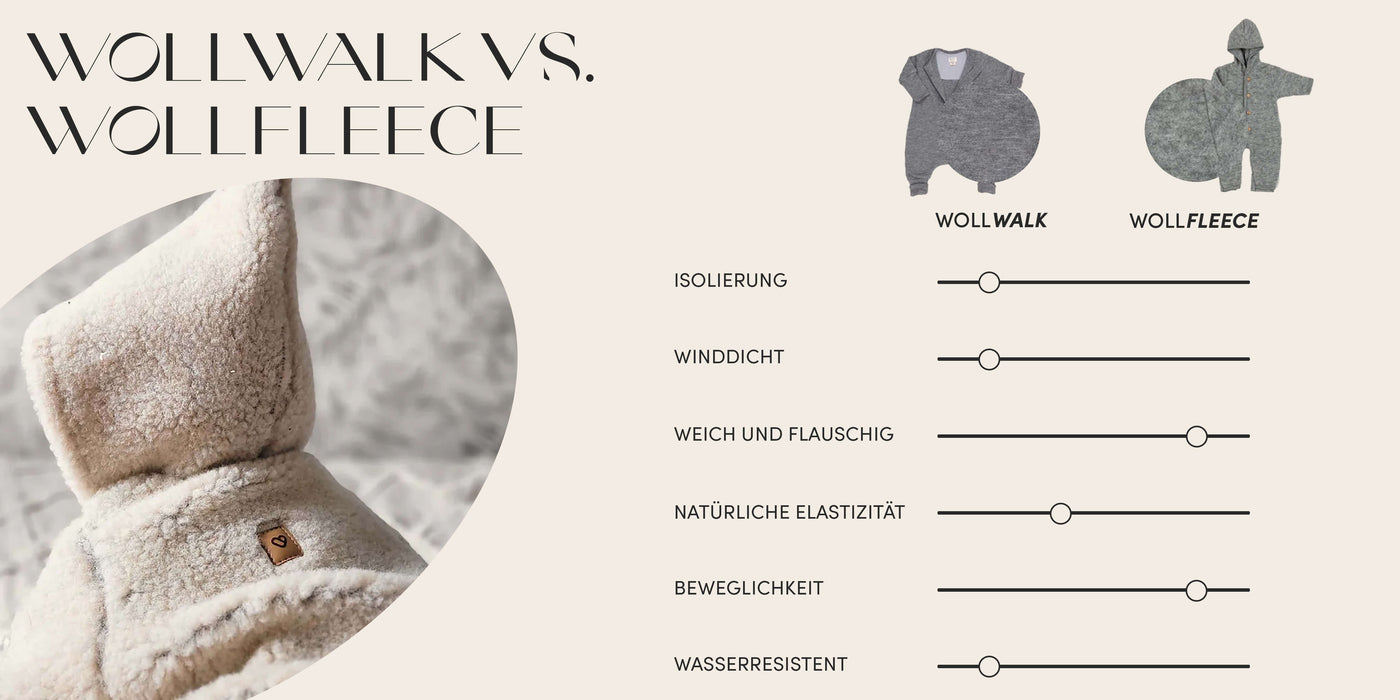
FAQ
Boiled wool is a very low-maintenance product. As with all wool products, it is often sufficient to hang the garment outside in fresh air to air it out. Coarse dirt, such as sand or mud, is best left to dry, and then gently brushed off with a soft brush. This method works especially well for boiled wool overalls, which are frequently used daily, as it easily removes typical playground stains. We love the "Wunderbürste" by Leistner, which is ideal for cleaning boiled wool.
If you do need to wash the boiled wool clothing, make sure to use a good wool detergent that contains lanolin (the natural wool fat) to restore the wool’s natural oils during washing. The Babybox Collection offers its own brand, so you don’t need to worry about a thing.
Boiled wool walk is a true natural wonder, made from 100% pure virgin wool—sheared directly from live sheep. After shearing, the wool undergoes a careful process: it is washed, carded, stretched, and spun into yarn. This yarn forms a loose fabric. However, the heart of the production is the "fulling" process. Here, the wool fabric is treated with warm water and worked intensively. Through rubbing and pressing, the fabric compacts and shrinks by 20-60%. The result? A thicker wool fabric with characteristic air pockets that provide the distinctive warming and temperature-regulating properties of wool walk.
The best part: Only natural processes are used in this production, with no chemicals or softeners involved. Only clear water is used.
Wool fleece is made from natural wool, obtained from sheep. After shearing, the raw wool is thoroughly cleaned to remove dirt, grease, and impurities. The wool is then carded, which means it is combed to smooth and align the fibers, creating an even, loose fleece. In some cases, the wool is also spun, but for wool fleece, it is often left unprocessed to maintain its fluffy structure.
In the next step, the wool is lightly felted by controlling moisture, heat, and movement. This causes the wool fibers to slightly interlock, giving the fabric its characteristic soft and cozy texture. Finally, the surface of the wool fleece is lightly brushed to enhance the fluffy feel. This process can be done through brushing or fulling. The finished fabric is then further processed depending on its intended use and cut into warm, breathable clothing or other textiles.
Boiled wool is water-resistant but not waterproof. Therefore, we recommend always putting a raincoat and rain pants over the boiled wool overall or jacket when it's raining. This way, your child is protected from moisture while still enjoying the benefits of wool. The same applies to wool fleece.
Boiled wool is suitable for colder temperatures, typically down to -15°C, due to its dense and insulating structure, which provides excellent warmth and wind resistance.
Wool fleece, on the other hand, is more suitable for milder cold conditions, generally down to around -5°C. It is softer and more breathable but less windproof and insulating compared to boiled wool, making it ideal for less extreme cold weather.
Both materials perform well when layered properly, but boiled wool offers more protection in harsher winter conditions.
Since boiled wool is a denser and more windproof material than wool fleece, and therefore has higher insulation capabilities, you can use boiled wool at temperatures as low as -15°C. It is always important to consider the layers of clothing your child wears under the boiled wool jacket or overall. Opt for a layered approach (the "onion look") and ensure that the layers your child wears underneath are made of wool or wool-silk blends whenever possible.
Wool fleece, due to its softer and more breathable surface, is better suited for milder cold temperatures. We recommend not going below -5°C. As with boiled wool, the choice of layers underneath is crucial. Since wool fleece is so soft, it works particularly well as an underlayer beneath windproof jackets or rainwear, providing your child with good freedom of movement.
Clothing made from boiled wool and wool fleece is generally designed with a looser cut to accommodate additional layers underneath. This allows you to further optimize warmth by adding suitable clothing layers. We always recommend wearing extra layers of wool clothing (such as cashmere, wool & silk, alpaca, etc.) under a wool suit or jacket. The bottom layer, which is the one closest to the body, should be made of wool to ensure optimal temperature regulation.
Boiled wool generally provides better insulation than wool fleece. This is because boiled wool has a dense and compact structure that offers excellent insulation and is particularly effective at protecting against cold wind. As a result, it is well-suited for very cold temperatures down to -15°C, depending on the clothing worn underneath. Wool fleece, on the other hand, is softer and more flexible, making it more comfortable to wear but not as effective in extreme cold conditions as boiled wool. It is better suited for milder temperatures down to around -5°C and works well as an additional layer under windproof or rain gear.
In general, both wool walk overalls and wool fleece overalls are cut slightly larger to allow you to comfortably layer multiple pieces of clothing underneath. Therefore, we recommend choosing the size that currently fits your child. For example, if size 80 fits well, we suggest opting for the next size up, which is 86/92, to ensure the overall lasts throughout the winter. It is also important to note that if the suits are too large, your child will need to use additional energy to warm up and maintain the warmth of the air pockets within the suit.
Our boiled wool & wool fleece products for every season
How do I properly care for and wash wool?
And because there is often uncertainty when it comes to caring for and washing wool, we have summarized the most important points for you in a detailed article. From the properties of wool and washing symbols to the question of why conventional detergents can damage wool fibers, you can find everything here to review.

